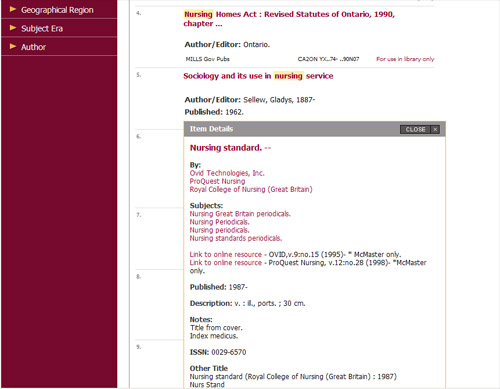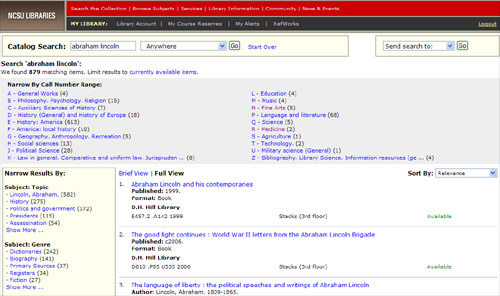Articles and studies continue to point out that when it comes to fulfilling their information needs, the first choice of students is to use search engines and the other Internet tools they grew up with, as opposed to the current crop of tools the vast majority of libraries provide for them.
As this video highlights, today’s OPAC is often the source of much frustration, both for patrons and library staff. Speaking about our own OPAC, let’s just say that its “leisurely pace” has made me an expert at small-talk while the patron and I wait for the results to come up. It also not hard to detect the frustration/bewilderment they have when we explain why they need to use one tool to search for books, and another to search for articles. They have come to expect one search box as the launching point to find the resources that are available to them.
Thankfully, various libraries are beginning to implement tools that integrate the strengths of Google and other web tools (speed, interactivity, user-friendliness) with the strengths of library resources (controlled vocabulary, access to high-quality material, etc.)
In the news a few months ago was the award given to Casey Brisson, the Information Architect for Plymouth State’s University’s Lamson Library, for his creation of the WPopac application. Among other features, this modern take on the OPAC makes the library’s holdings visible to users of search engines and it allows patrons to add information to the library record. This link shows what a holding record looks like in this catalog.
While the WPopac is the work of a small dedicated team, Endeca is a diverse information technology company. I have come across two libraries that have implemented their search product. McMaster announced their launch of the product today. As you can see when you try a search in their “Endeca-powered library catalogue”, the interface makes it easy to limit a search to geographic region, subject era, etc. Most exciting to me is the seamless integration with their electronic resources.
North Carolina State University Libraries also have an Endeca-based product. They also allow you to install a web-browser search box for the catalog. Another cool feature is that after you type in your search, at the top of the page you get a breakdown of the results by Call Number.
If for whatever reason you were looking for items about Abraham Lincoln and the Fine Arts, this product makes it quick and easy to do.
One area where the Endeca products fall short of Google is spelling error recognition. As someone who constantly has to use Google to find proper spellings for the searches students ask to me to do for them, any help I can get from a search product is appreciated.
In honor of the NCAA basketball tournament I decided to do a search for items on the topic of former Kansas Jayhawk star Wilt Chamberlain. When I typed in “Wilt Chamberlin” in Google it immediately suggested I meant to type in “Wilt Chamberlain”. However with the McMaster and NCSU catalogs, they did not guide me to the person I was obviously looking for.
Except for this small quibble, it is a positive sign that libraries are working hard to bridge the gap between today’s advanced web tools and technology and the legacy products so many of us are tied down to.


March 25, 2007 at 11:43 pm
Phoenix Public Library (http://www.phoenixpubliclibrary.org/) has also implemented Endeca. The Florida Center for Library Automation has a prototype. (http://catalog.fcla.edu/)
May 21, 2007 at 4:08 pm
[…] review of faceted classification which uses the Endeca catalogue at NCSU as an example. […]
August 17, 2007 at 2:57 pm
[…] a few area schools provide electronic access to this journal (another reason to be jealous of the cool people at McMaster) and since it won’t appear in print for a few months we can’t ILL […]